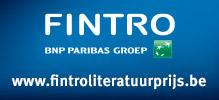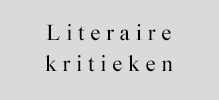Reportages
Op 7 oktober 2017 was het vijf jaar geleden dat Ivo Michiels overleed. Lars Bernaerts en Sigrid Bouset vroegen aan acht auteurs en aan zijn echtgenote om hun geliefde auteur sprekend in leven te houden.
Op zondag 8 oktober om 11 u. werd dit huldenummer van DW B ...
Alleen online: A Storehouse of Wonders. Treasures in the Alexander Turnbull Library, New Zealand. Part two
By far the majority of treasures now held in the Alexander Turnbull Library, however, were collected by one man, Alexander H. Turnbull (1868-1918). By the time he died in Wellington in 1918 he had amassed an enormous library of ca. 55,000 books, in addition to photographs, drawings, paintings, prints, manuscripts, and various other objects.(27) These he left to the nation of New Zealand to form the nucleus of a national collection which became known as the Alexander Turnbull Library. Many of these were New World treasures, but a substantial proportion originated in the Old World.
Alex, as he usually signed himself, was born in Wellington, New Zealand, on 14 September 1868.(28) However, he was largely brought up and educated in England, and it was while living at Sydenham Hill on the outskirts of London that he began collecting for his library, a hobby which would eventually become an obsession. Alex returned to New Zealand to work in the family business when in his early 20s. He was in two minds about this. In 1891 he wrote to his brother Robert: ???Well, well I suppose N.Z. is going to the dogs as rapidly as any other place & one may just as well commence the voyage there as anywhere else???.(29) On another occasion while referring to New Zealand as ???barbarous??? he also recognised its great unspoiled beauty and expressed concern at the change civilisation would bring.(30) 
Fig. 4. Alexander Horsburgh Turnbull as a young man. Photograph taken in 1891, by Van der Weyde, in London, England. ATL ref: 1/2-032603-F
Living in New Zealand, far from the rest of the world, did not hinder his collecting activity. He continued to purchase books mainly from dealers in London, but also from other parts of Britain, the USA, Holland, Germany, and elsewhere. Alexander Turnbull???s interests were wide and his pockets were deep. He did not confine himself to books published in the English language although these books predominate; he also collected titles in most of the main European languages: French, German, Italian, and Dutch titles in particular and of course Latin. He collected John Milton (1608-1674) on a major scale and there were very few early editions of this important English poet and polemicist that escaped Alex???s seemingly bottomless purse. Early printing and the art of the book also took his fancy and a number of our incunables, including a beautiful copy of Clemens, Constitutiones (1471) printed on vellum,(31) and a complete run of the Kelmscott Press are just two results of this interest.
Most of the fine bookbindings now held were in the collection of Alexander Turnbull at the foundation of the Turnbull Library. As early as 1919 the annual report noted that bindings were a special feature of the library and that these included the bindings of such well-known contemporary binders as Zaehnsdorf, Cobden Sanderson, Sangorski & Sutcliffe, Riviere, Cazin and others.(32) But there were also historic bindings in his collection, both fine and trade, as well as temporary bindings. It is difficult to single out specific examples, but a recently uncovered William Scott binding and a stunning ca.1640 Cambridge binding on a bound together folio Bible and Book of Common Prayer could be mentioned (see Fig.5).(33) Accompanying the Bible is a later-added velvet-lined oak case attributing the binding to Hugh Hutchinson. However, Hutchinson was primarily a bookseller and law-stationer in Durham, in the second half of the seventeenth century, and while he bound a number of books for Bishop Cosin???s Library in Durham, most of these are in an ordinary brown tanned calf, and are largely blind tooled, with plain fillets, except for the gilt lettering on the spines or spine labels.(34) In addition, the tools used on the Turnbull binding do not match any of his known tools. John Houlden (d.1670) is a more likely possibility. He was a Cambridge binder who had strong associations with the University, where this book was printed, and he is known to have bound books nearly every year for the University from 1637 until 1662.(35) As part of this connection with the University, John Houlden received special commissions, and the ornateness of the gold tooling on this volume suggests that it was specially bound for presentation. However, as with Hutchinson, the tools cannot be matched to Houlden???s other known bindings. Alexander Turnbull acquired this treasure via his London book dealer, Bernard Quaritch, from Lord Amherst???s sale at Sothebys, London in December 1908. It had been listed in the sale catalogue as a ???beautiful binding.... No finer copy could be desired??? and also highlighted with a plate.(36) 
Fig. 5. Fine bookbinding. Bible and Book of Common Prayer (1638), 433 x 292 mm. Alexander H. Turnbull collection. ATL ref: fREng BIBLE 1638
One of the most special items in Alexander Turnbull???s library, if such a thing could be singled out, is a medieval text book on music. This manuscript contains the works of two authors: De musica by Boethius (c.480-524) and a collection of four works by Guido of Arezzo (b. c991-2; d. after 1033), Micrologus, Regule Rithmice, Prologus in Antiphonarium, and Epistola. Both authors greatly influenced the development of Western music during the Middle Ages. Boethius was a theorist and philosopher, and De musica is essentially a Latin translation and commentary on the writings of earlier Greek philosophers, especially Pythagoras, Plato, and Aristotle, as transmitted by Ptolemy and Nicomachus. The main focus of his treatise is the mathematical basis of music. The Turnbull manuscript is particularly noted for the number and elegance of its finely-drawn diagrams with their graceful arches illustrating the various mathematical ratios, some of which incorporate animal forms (see Fig.6).
Guido was a music theorist but he was more concerned with performance. He is credited with the invention of the musical stave, or certainly with its promotion, and with the sol-fa system for sight singing. He describes his sight reading system to his friend Brother Michael in the Epistola. However, the more substantial first work, Micrologus is his most well-known. This was written as an instruction book for choirboys. One of its most important sections is Guido???s description of early polyphony (part singing). Guido wrote that two voices do not have to move independently all the time, something that had earlier been the accepted custom, but that two voices could move independently using oblique motion to avoid the tritone and with convergence at the conclusion of a line.(37)
This manuscript was copied in the second quarter of the twelfth century, probably by the monks of Christ Church Cathedral Priory in Canterbury, England. An extant fragment of the mid-twelfth century catalogue of the Christ Church Priory library lists the titles held, each title prefaced with a unique library symbol. Two copies of Boethius are listed and the symbol in front of the second matches the symbol on the top left corner of f.1v in the Turnbull Library copy.(38) This manuscript was acquired by Alexander Turnbull in 1900 from Bernard Quaritch, and was the only medieval manuscript he bought.(39)
Fig. 6. Boethius, De musica, f.43v, (211 x 144 mm), 12th century. Alexander Turnbull collection. ATL ref: MSR-05.
Text continues in Part three.
Notes
27. E.H. McCormick, The fascinating folly: Dr Hocken and his fellow collectors (Dunedin: University of Otago Press, 1961), p. 19. See also E.H. McCormick, Alexander Turnbull: his life his circle his collections (Wellington: Alexander Turnbull Library, 1974).
28. The birth notice appeared in the Wellington Independent, 19 September 1868, p.4.
29. Letter 30 October 1891 Alexander Turnbull to Robert Turnbull. Alexander Turnbull, ???Letter Book Volume 1???, ATL qMS-2053.
30. Letter 12 July 1893 Alexander Turnbull to Mr Williams. Letter Book , vol.1.
31. Clemens V, Constitutiones (cum apparatu Joannis Andreae) (Mainz: Peter Schoeffer, 13 Aug. 1471), ATL fRInc CLEM Cons 1471.
32. Report of the Advisory Director, Turnbull Library, AJHR, 1919, H22, p.30. See also Ruth Lightbourne, ??? ???I wish you to send it to Zaehnsdorf in London for binding???: Alexander Turnbull and his bookbindings??? Script & Print: Bulletin of the Bibliographical Society of Australia and New Zealand vol.34, no. 1 (2010): 9-33.
33. Patrick Miller, Elevation, section, plan, and views, of a triple vessel (Edinburgh: [s.n.], [1787]), ATL fREng MILL Elev 1787; and Book of Common Prayer ([Cambridge]: Printed by Thomas Buck and Roger Daniel, printers to the Universitie of Cambridge, Anno Dom. 1638), ATL fREng BIBLE 1638. For more on the William Scott binding, see Ruth Lightbourne, ???A William Scott binding in New Zealand???, The Book Collector (forthcoming).
34. A.I. Doyle, ???Hugh Hutchinson bookbinder of Durham c.1662 or 1665-95???, Book Collector vol. 24, no.1 (Spring, 1975): 25-32.
35. Mirjam M. Foot, The Henry Davis gift: a collection of bookbindings, 2 vols (London: British Library, 1978), vol.1, pp.66-67.
36. A Classified List of the Books in Messrs. Sotheby, Wilkinson & Hodge???s Sale Catalogue of Lord Amherst of Hackney???s Library ([London: Dryden press, 1908-1909]), lot no. 118.
37. MSR-05. This has been digitized and is available to view through the manuscript catalogue TAPUHI http://tapuhi.natlib.govt.nz/ Manion, Medieval, no. 140. See also Fiona McAlpine, ??? ??? Concorditer dissonant???: From consonance to polyphony (Alexander Turnbull Library, MSR-05)??? in Migrations ed. Hollis and Barrett, pp.165-183.
38. Christ Church Canterbury catalogue (fragment, f.74r), mid 12th century. Facsimile reproduced in Montague Rhodes James, The ancient Libraries of Canterbury and Dover: the catalogues of the libraries of Christ church priory and S. Augustine???s abbey at Canterbury and of St. Martin???s priory at Dover (Cambridge: at the University Press, 1903), p. 3. The catalogue fragment also mentions that at that time the Boethius was bound in boards ???Musica Bo[ethii] i[n] as[seribus]???.
39. Letter 15 June 1900 from Bernard Quaritch to Alexander Turnbull, ATL MS-Papers-0057-111 (1900).


%20the%20invisible%20XXVIII%2c%20100x80%20cm%2c%202014.jpg)



